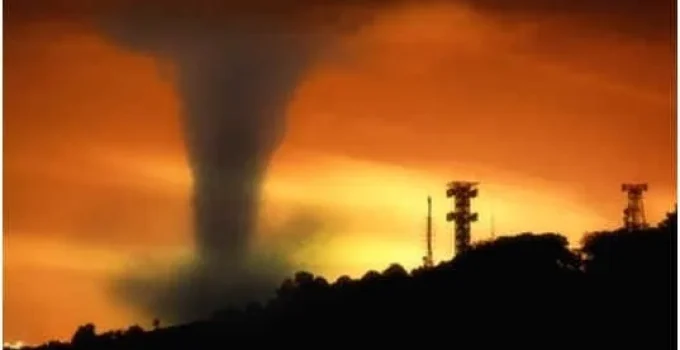How Do Tornadoes Dissipate?
Tornadoes are fast, furious, and often frightening. But no matter how strong they are, every tornado eventually comes to an end. So what causes a tornado to stop spinning? Why do some last just a few minutes while others go on for over an hour? In this article, we’ll explore the science behind how tornadoes weaken and finally disappear.
📘 Dive Deeper
- What Is a Tornado’s Life Cycle?
- The Mature Stage: Full Strength
- What Happens During Dissipation?
- Why Some Tornadoes Last Longer
- Can Tornadoes Come Back?
- 🎯 Final Thoughts
- 📚 References
🌪️ What Is a Tornado’s Life Cycle?
Just like living things, tornadoes go through a life cycle. Most tornadoes last only 10 to 20 minutes, though some can survive over an hour. Meteorologists usually describe this life cycle in three main stages:
- Formation (Development Stage)
- Mature Stage (Strongest Point)
- Dissipation (Decay Stage)
In this article, we’ll focus on the dissipation stage—the final part where the tornado begins to die out.
🌀 The Mature Stage: Full Strength
During the mature stage, the tornado is fully developed. It:
- Has strong rotation, called a vortex
- Connects the thunderstorm cloud to the ground
- Pulls in warm, moist air to keep spinning
At this point, the tornado might be wide, loud, and very destructive. But it depends on the supercell thunderstorm above it to survive.
📊 Tornado Fact: The longest-lasting tornado on record stayed on the ground for 3.5 hours and traveled over 219 miles during the 1925 Tri-State Tornado [1].
So what makes it stop?
🌫️ What Happens During Dissipation?
The tornado begins to weaken when changes happen inside the storm. Here’s what meteorologists believe causes dissipation:
- Loss of Warm, Moist Air
Tornadoes feed off rising, moist air. If this supply is cut off—maybe by rain-cooled air or a shift in wind—the tornado can lose power. - Outflow Becomes Stronger than Inflow
When cool air (called outflow) spreads out too fast, it chokes the tornado’s fuel source. It’s like turning off the engine. - Weakened Rotation
The mesocyclone (rotating part of the storm) may tilt or stretch too far to support the vortex near the ground. - Storm Collapse or Movement
If the thunderstorm that created the tornado moves into a less favorable area or collapses, the tornado can’t survive.
You might see the tornado become thin, rope-like, or wobbly during this stage. This is called a rope tornado, and it usually means the storm is dying out.
⏳ Why Some Tornadoes Last Longer
Not all tornadoes dissipate quickly. Several factors can make a tornado last longer:
| Factor | Effect on Tornado Life |
|---|---|
| Strong, steady inflow | Keeps the tornado energized |
| Stable mesocyclone | Supports longer lifespan |
| Slow storm movement | Gives tornado time to grow |
| Ideal surface conditions | Allows vortex to remain stable |
💡 Interesting Note: According to the NOAA Storm Prediction Center, over 70% of tornadoes are weak and last less than 10 minutes—but the strongest ones can last over an hour [2].
🔁 Can Tornadoes Come Back?
Once a tornado dissipates, that exact funnel is gone. But the storm that produced it might still be capable of creating another tornado a few minutes later. This is called a tornado cycle.
Sometimes a supercell can create multiple tornadoes over its life, spaced out by 10 to 30 minutes.
🎯 Final Thoughts
Tornadoes end when the conditions that created them change. Whether it’s a shift in wind, a lack of warm air, or the collapse of the parent storm, all tornadoes eventually lose their strength and die out. Understanding the dissipation process helps meteorologists track storms more accurately and warn people when the danger has passed.
Even though the tornado may weaken, it can still be dangerous in its final moments. Always stay in shelter until officials say it’s safe.
📚 References
- National Centers for Environmental Information. “The Tri-State Tornado.” https://www.ncei.noaa.gov/news/tri-state-tornado
- Storm Prediction Center (NOAA). “Tornado Facts.” https://www.spc.noaa.gov/faq/tornado
- American Meteorological Society. “Tornado Lifecycle.” https://glossary.ametsoc.org/wiki/Tornado
- NOAA National Severe Storms Lab. “How Do Tornadoes Form and Die?” https://www.nssl.noaa.gov
